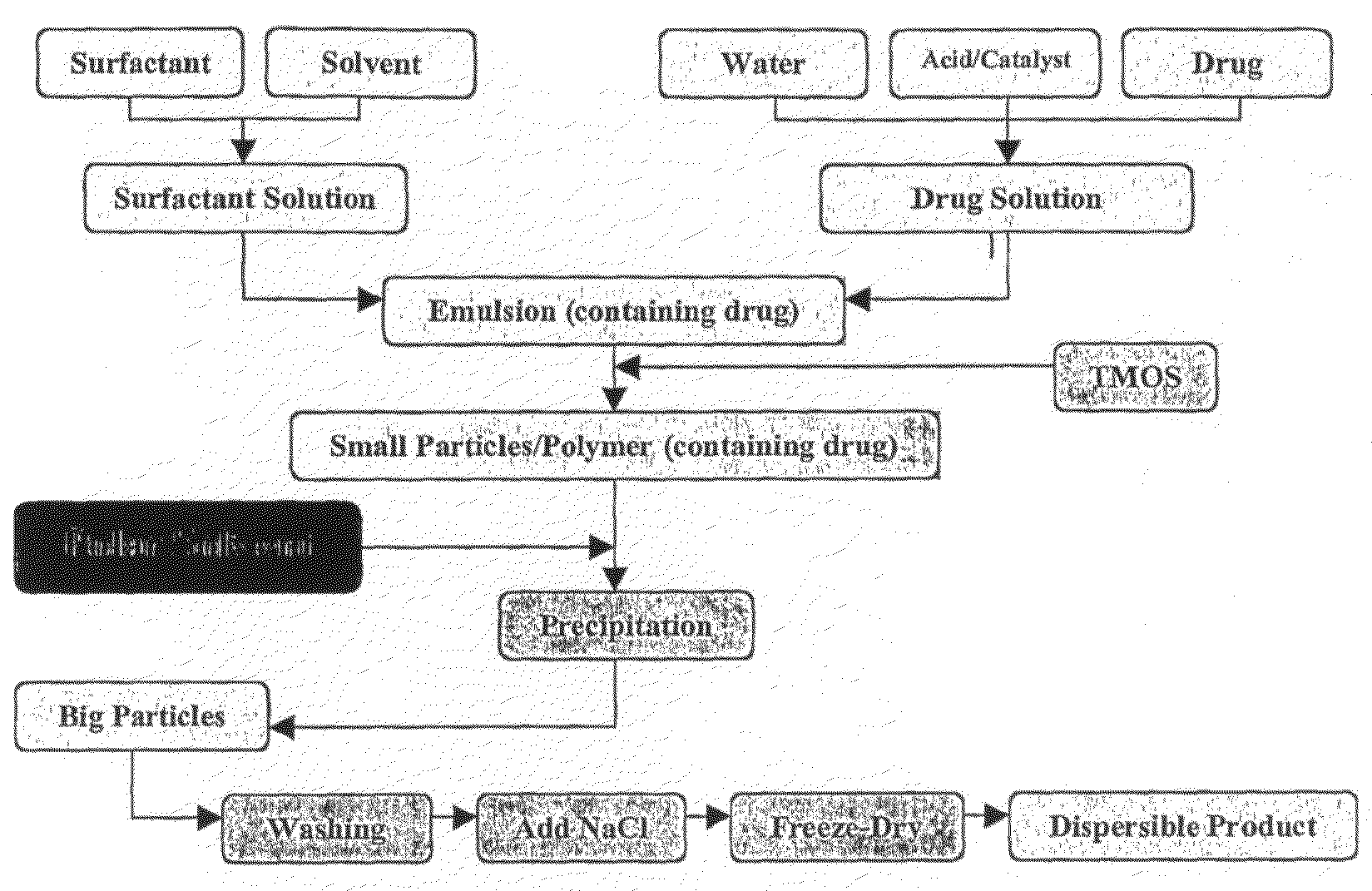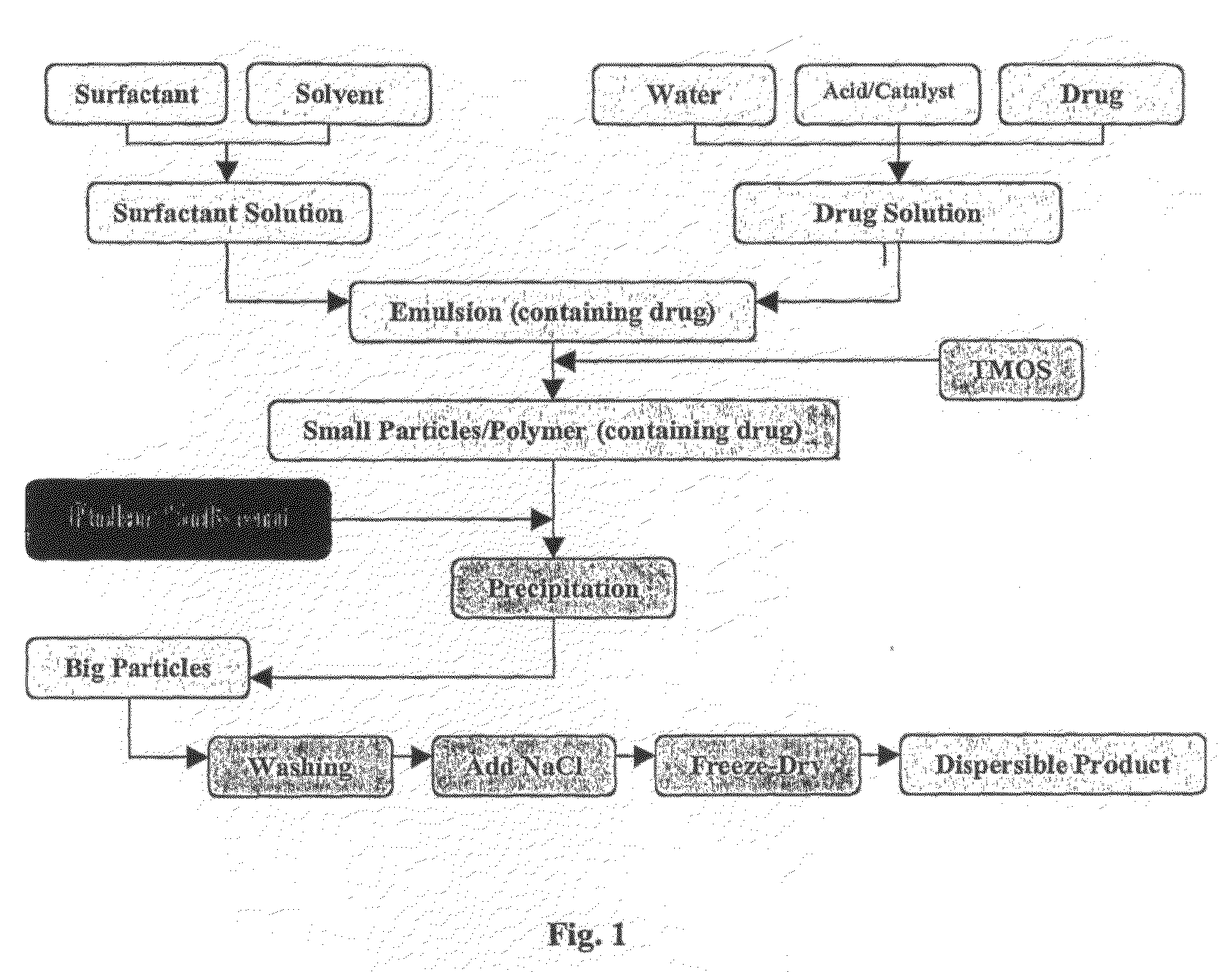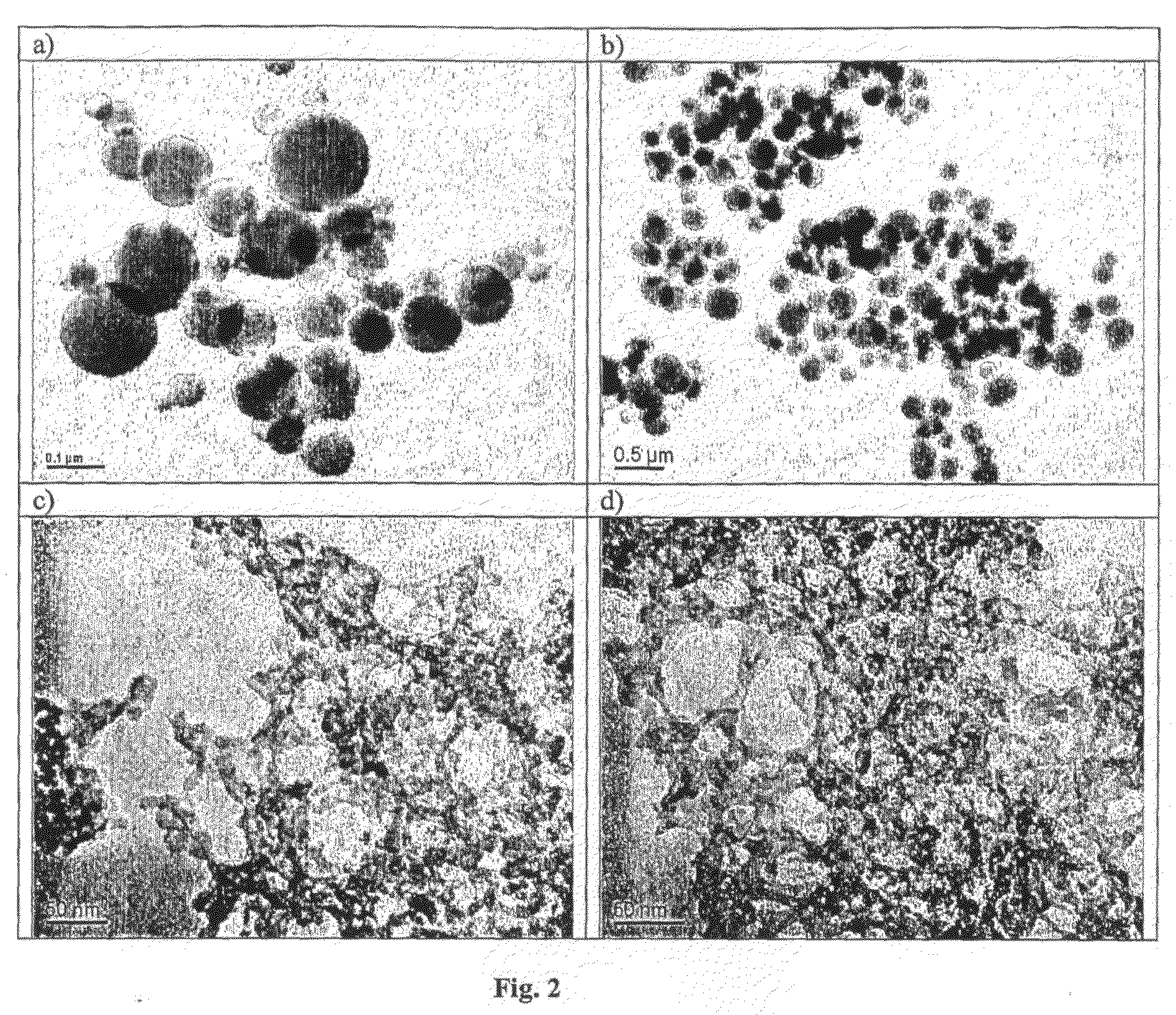Solid particles from controlled destabilisation of microemulsions
- Summary
- Abstract
- Description
- Claims
- Application Information
AI Technical Summary
Benefits of technology
Problems solved by technology
Method used
Image
Examples
examples
[0229]The following general experimental procedure was used in the experiments detailed below for preparing nanoparticles containing doxorubicin, with the variations from this general procedure detailed for the individual experiments:[0230]1. Dissolve NP-5 [nonylphenoxypolyethoxyethanol, C9H19C6H4(OCH2CH2)nOH, n=5] 4.40-8.80 g (10-20 mmol) in 50 mL cyclohexane;[0231]2. Add 1.08 mL dilute nitric acid, pH1 (equivalent to 60 mmol water) containing 0.06 mmol NaF and 0.1-1.0 mg doxorubicin. Stir for 20 minutes to produce a microemulsion;[0232]3. Add 0.911 mL (6 mmol) TMOS (tetramethoxysilane) into the above system;[0233]4. Age by stirring for 24 to 48 hours;[0234]5. Pour the resultant emulsion into a stirred mixture of dry acetone (100 mL) and cyclohexane (100 mL), and stir for 10 minutes, to destabilise the emulsion and coalesce the particles;[0235]6. After sedimentation, separate the solid particles from organic (liquid) phase and wash the particles three times with 50 mL acetone each ...
PUM
| Property | Measurement | Unit |
|---|---|---|
| Diameter | aaaaa | aaaaa |
| Diameter | aaaaa | aaaaa |
| Diameter | aaaaa | aaaaa |
Abstract
Description
Claims
Application Information
 Login to View More
Login to View More - R&D
- Intellectual Property
- Life Sciences
- Materials
- Tech Scout
- Unparalleled Data Quality
- Higher Quality Content
- 60% Fewer Hallucinations
Browse by: Latest US Patents, China's latest patents, Technical Efficacy Thesaurus, Application Domain, Technology Topic, Popular Technical Reports.
© 2025 PatSnap. All rights reserved.Legal|Privacy policy|Modern Slavery Act Transparency Statement|Sitemap|About US| Contact US: help@patsnap.com



